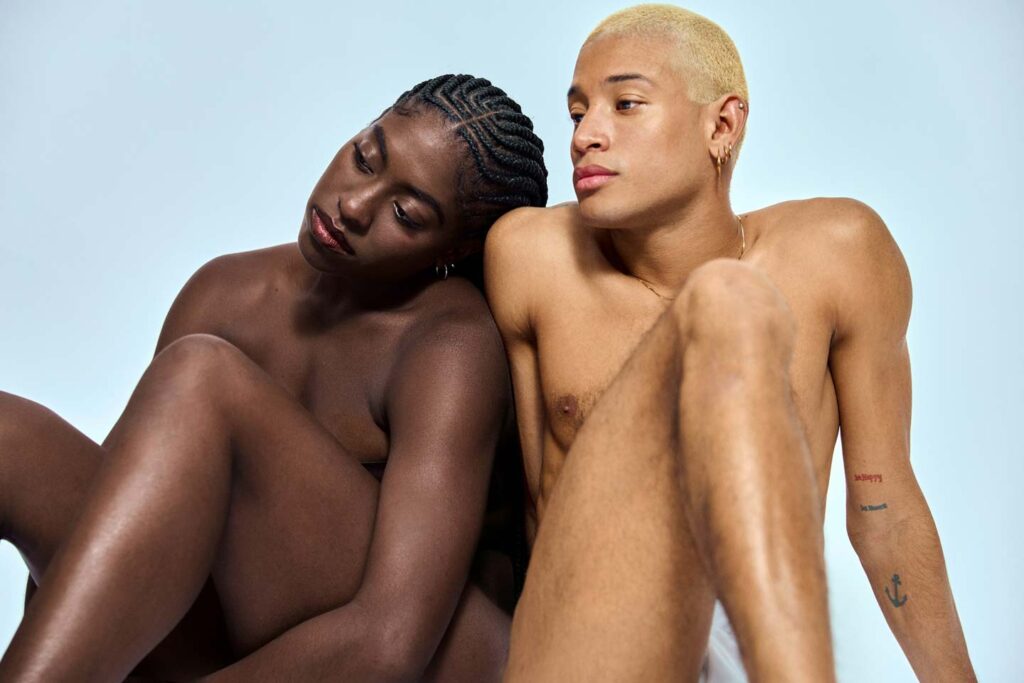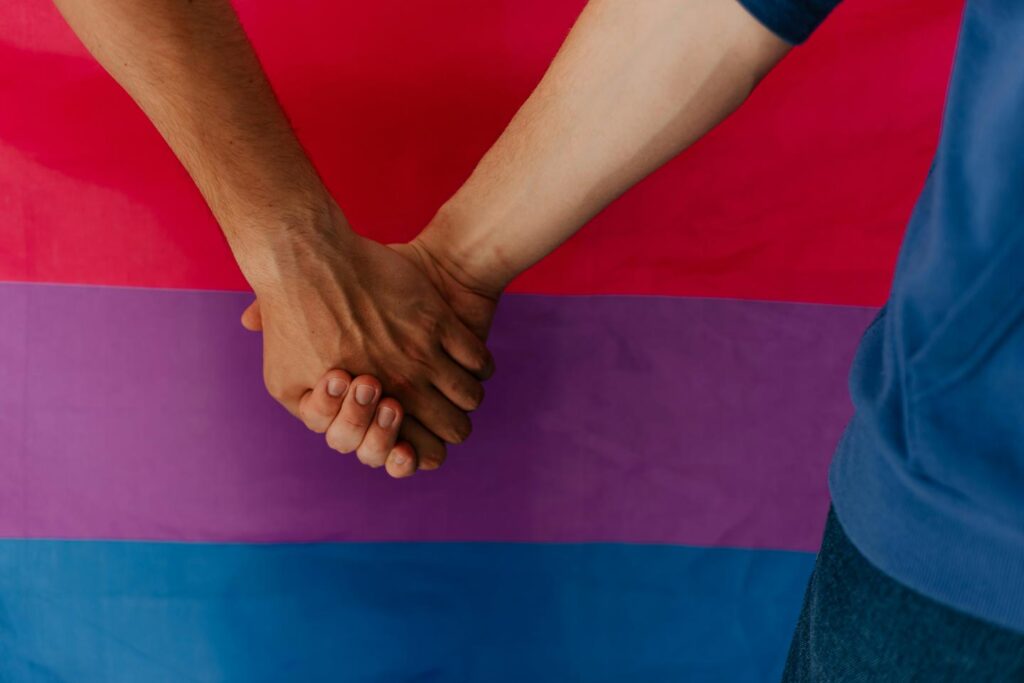Sexual orientation has fascinated scientists for decades. Why are some people attracted to the same sex, others to the opposite sex, and some to both? Is it something we’re born with or something we learn?
While we don’t have all the answers yet, science has made significant progress in understanding the biological factors that influence who we’re attracted to.

Genetic Influences on Sexual Orientation
Research consistently shows that our genes play a role in shaping sex orientation, but the story isn’t simple.
Twin Studies: The First Clues
Twin studies have been particularly valuable in understanding genetic contributions to sexual orientation. These studies compare identical twins (who share 100% of their DNA) with fraternal twins (who share about 50%).
- When one identical twin identifies as gay or lesbian, the other twin has a higher chance of also being gay or lesbian compared to fraternal twins.
- This pattern strongly suggests a genetic component to sex orientation.
- Studies show that about 40% of the variance in men’s sexual orientation can be attributed to genetic factors.
- For women, genetic factors account for approximately 20% of the variance in sexual orientation.
This doesn’t mean that 40% of being gay is “caused” by genes. Rather, it means that genetic differences between people explain about 40% of the differences we see in sex orientation.
Family Patterns
Sexual orientation appears to run in families, providing further evidence for genetic influence.
- Having gay or lesbian family members increases the likelihood of someone being gay or lesbian themselves.
- This familial pattern holds true across different cultures and time periods.
- However, family environments are shared too, so these patterns alone don’t prove genetic causation.
- Some studies suggest that same-sex orientation may be transmitted through the maternal line in some families.
No Single “Gay Gene” Exists
One of the biggest breakthroughs in recent years is the understanding that there is no single “gay gene” that determines orientation.
You might also be interested in: Gender Identity and Sexual Orientation

Large-Scale Genetic Studies
In 2019, scientists published the largest study ever conducted on the genetics of sex orientation, analyzing DNA from nearly half a million people.
- The study found five genetic variants associated with same-sex behaviour, but each had only a tiny effect.
- These genetic markers collectively explained only 8-25% of same-sex behaviour across the population.
- Two variants were found in both men and women, two only in men, and one only in women.
- Some of these genetic variants are located near genes involved in hormone regulation and smell processing.
This suggests that the genetic influences on men’s and women’s sexual orientation partly differ, which matches what we see in twin studies where heritability is higher for men.
Polygenic Nature
Sexual orientation is what scientists call “polygenic” – influenced by many genes working together.
- Hundreds or even thousands of genes may each make tiny contributions.
- No single gene can predict someone’s sex orientation.
- This polygenic pattern is similar to other complex human traits like height or intelligence.
- The combined effect of these genes creates a predisposition, not a predetermined outcome.
Beyond Genes: Other Biological Factors
Genetics is just one piece of the puzzle. Other biological factors also influence sex orientation.
Prenatal Hormone Exposure
The hormones a foetus is exposed to during pregnancy appear to play a crucial role in shaping sexual orientation.
- The developing brain begins in a “female” state and is masculinised by testosterone in typical male development.
- The amount of testosterone reaching the brain, particularly a region called INAH3, may influence sexual attraction.
- Studies of finger length ratios (a marker of prenatal testosterone exposure) show that lesbian women often have more masculine patterns than straight women.
- Gay men sometimes show finger length ratios that are less masculine than those of straight men
- Animal studies confirm that manipulating hormone exposure during development can alter sexual behaviour later in life.
Brain Structure Differences
Some research has found subtle differences in brain structure between heterosexual and homosexual individuals.
- The size of certain hypothalamic nuclei may differ based on sexual orientation.
- These brain regions are involved in sexual behaviour and develop early in life.
- Connectivity patterns between brain regions may also differ.
- However, it’s unclear whether these differences cause sexual orientation or result from it.
Maternal Immune Response
An intriguing biological factor involves the mother’s immune system.
- Research shows that men with older brothers are more likely to be gay.
- This “fraternal birth order effect” happens because a mother’s immune system may develop antibodies to male-specific proteins.
- With each male pregnancy, these antibody levels increase.
- These antibodies may affect brain development related to sex orientation in later-born sons.
- This effect may explain 15-29% of gay men’s sexual orientation.
- Interestingly, this effect only applies to biological brothers who shared the same womb, not adopted brothers.

The Interplay of Genes and Environment
Sexual orientation emerges from a complex mix of genetic and environmental factors interacting throughout development.
Gene-Environment Interactions
Genes and environment don’t operate independently but influence each other.
- Certain genetic variants may make people more or less sensitive to specific environmental factors.
- Childhood gender nonconformity (like boys preferring typically feminine activities) may interact with genetic predispositions.
- Early-life experiences might trigger or suppress genetic influences on sexual orientation.
- Cultural factors can affect how sex orientation is expressed, even if the underlying attractions remain the same.
Epigenetic Mechanisms
Epigenetics – changes in gene expression without altering DNA sequence – may help explain how environmental factors influence sexual orientation.
- Hormonal exposures can create lasting changes in how genes function.
- Women with congenital adrenal hyperplasia (who were exposed to high testosterone levels before birth) have higher rates of same-sex attraction.
- These effects appear to be mediated through epigenetic mechanisms.
- Some researchers propose that epigenetic marks may be passed down through generations, potentially explaining some familial patterns.
Critical Periods in Development
There may be specific windows of development when sex orientation is particularly sensitive to biological influences.
- The first trimester of pregnancy appears to be especially important for brain sexual differentiation.
- Hormone fluctuations during this period may have lasting effects on sexual orientation.
- Later developmental periods, including puberty, may also play a role in shaping sexual attraction patterns.
- These critical periods help explain why sexual orientation typically feels fixed by adolescence.

Sexual Orientation as a Spectrum
The polygenic nature of sex orientation helps explain why it exists on a spectrum rather than as simple categories.
Beyond Binary Categories
Sexual orientation isn’t just gay or straight – it exists along a continuum.
- The genetic factors that distinguish heterosexual from homosexual behaviour aren’t the same as those that influence the degree of same-sex attraction.
- This suggests there isn’t a simple genetic continuum from straight to gay.
- Some genetic influences affect sexual attraction broadly, while others may be more specific to particular patterns of attraction.
- This complexity helps explain why many people identify as bisexual or somewhere between exclusively gay and exclusively straight.
Fluidity and Stability
Sex orientation shows different patterns of stability across the lifespan.
- For most people, core attractions remain relatively stable from adolescence onward.
- Women’s sexual attractions appear somewhat more fluid than men’s on average.
- This sex difference in fluidity may relate to the lower genetic contribution to women’s sexual orientation.
- The genetic architecture supports both the stability many people experience and the fluidity others report.
Complexity of Sexual Identity
Sexual orientation encompasses multiple dimensions.
- Attraction, behaviour, identity, and fantasies are influenced by similar but not identical genetic factors.
- Someone might experience same-sex attraction but not engage in same-sex behaviour.
- The genetic correlation between these different aspects of sexuality is high but not perfect.
- Cultural and social factors strongly influence how people label and express their sex orientation.
Implications and Limitations
Understanding the biology of sexual orientation has important implications but also limitations.
Not Deterministic
Biological influences on sex orientation are probabilistic, not deterministic.
- Even identical twins sometimes have different sexual orientations despite sharing 100% of their DNA.
- Genetic factors influence predispositions but don’t dictate outcomes.
- No genetic test could ever predict an individual’s sex orientation with certainty.
- The complex polygenic nature ensures that sexual orientation will always involve some unpredictability.
Natural Variation
The science strongly supports that variations in sex orientation are a natural part of human diversity.
- The genetic patterns observed suggest that same-sex behaviour is simply part of the normal spectrum of human sexuality.
- These variations exist across cultures and throughout history.
- As one researcher noted, “the findings themselves reinforce this idea that diversity of sexual behaviour across humanity is really a natural part of our overall diversity as a species”.
- The persistence of same-sex attraction across time suggests it may have had evolutionary advantages or been selectively neutral.
Ethical Considerations
The biological research on sexual orientation raises important ethical questions.
- Understanding the biology doesn’t imply that sexual orientation should be changed.
- The complex polygenic nature makes “genetic engineering” of sexual orientation practically impossible.
- The research supports that sexual orientation is not a choice and cannot be wilfully changed.
- This scientific understanding has important implications for social and legal policies.

Conclusion
The biology of sexual orientation is fascinating and complex. Genetic factors play a significant role, accounting for roughly 40% of the variation in men’s sexual orientation and 20% in women’s. But there’s no single “gay gene” – instead, many genes each contribute small effects.
Prenatal factors like hormone exposure and maternal immune responses also influence sexual orientation. All these biological factors interact with environmental influences in ways we’re still working to understand.
What’s clear is that sexual orientation emerges from a complex interplay of nature and nurture, resulting in the rich spectrum of human sexuality we observe. This biological complexity helps explain why sexual orientation manifests as a spectrum and defies simple genetic prediction.
The science tells us that variations in sexual orientation are a natural part of human diversity – not something chosen or easily changed, but a fundamental aspect of who we are. As research continues, we’ll likely gain even deeper insights into the fascinating biological foundations of human sexual orientation.
